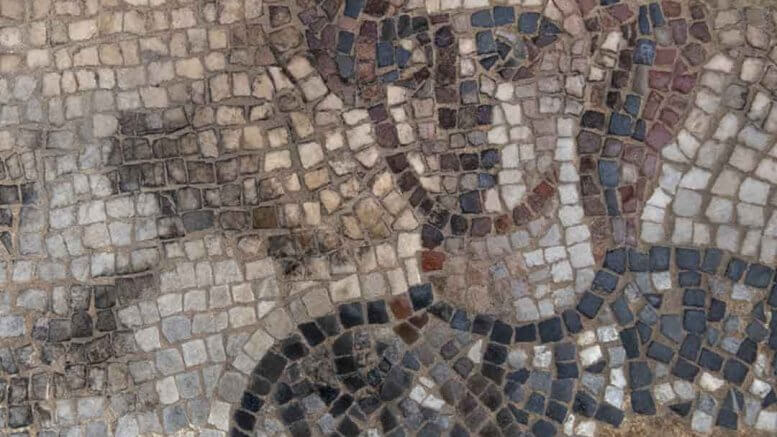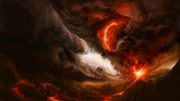Summary: Ancient mosaics depicting the earliest known images of biblical heroines from the book of Judges, Prophetess Deborah and Sisera-slayer Jael, have been uncovered in a Jewish synagogue in Israel.
Now Deborah, a prophetess, the wife of Lappidoth, was judging Israel at that time. She used to sit under the palm of Deborah between Ramah and Bethel in the hill country of Ephraim, and the people of Israel came up to her for judgment. – Judges 4:4 (ESV)
And behold, as Barak was pursuing Sisera, Jael went out to meet him and said to him, “Come, and I will show you the man whom you are seeking.” So he went in to her tent, and there lay Sisera dead, with the tent peg in his temple. – Judges 4:22 (ESV)
First Known Depictions of Heroines from the Bible
Unprecedented mosaics have been uncovered in the ruins of a Late Roman period synagogue in the ancient Jewish village of Huqoq in northern Israel. So far, the group has discovered “the first known depiction of the biblical heroines Deborah and Jael as described in the book of Judges,” according to a press release from the University of North Carolina (UNC). The sensational find is exciting because portrayals of biblical accounts with female heroes are exceptionally rare.
The Huqoq Excavation Project, led by Jodi Magness, returned this summer to the 1,600-year-old site for its 10th season of exploration after a 2-year pause for the COVID pandemic. The team consists of archaeologists, academics and students from the University of North Carolina at Chapel Hill.
The focus this year has been the synagogue’s southwestern portion, built between the late fourth and early fifth century AD. Previous seasons have investigated the building’s main hall and aisles. Many firsts in the history of ancient Jewish art have been revealed due to the mosaics discovered, including the earliest non-biblical scene in synagogue art.
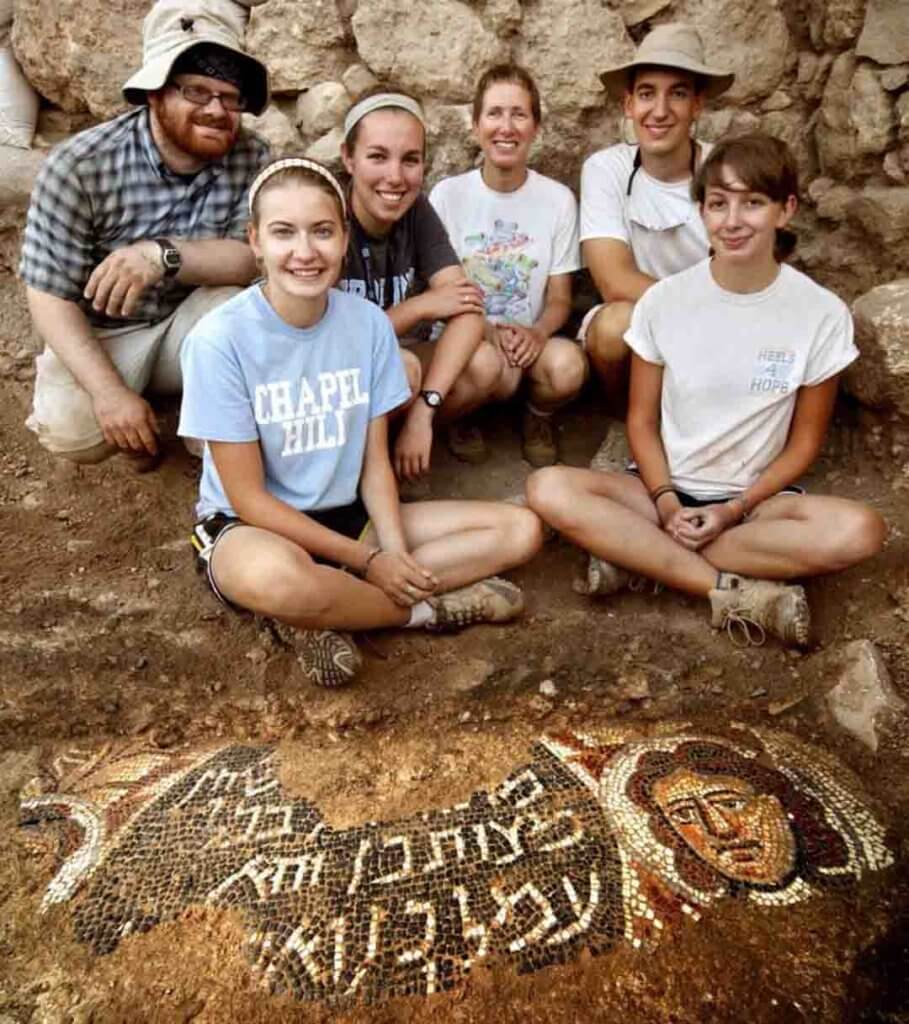
UNC professor Jodi Magness (center) and UNC students (left to right) Brian Coussens, Caroline Carter, Jocelyn Burney, Jonathan Branch, and Kelly Gagnon, with a Huqoq mosaic uncovered in 2012. (credit: Jim Haberman, UNC Chapel Hill)
Deborah, Jael and the Slaying of Sisera
The Huqoq mosaic is extensive, covering the entire floor of the ancient Galilean synagogue. The newly discovered section, made up of the 3 horizontal registers, is dedicated to the account written in Judges 4 where the prophetess and judge Deborah joins military commander Barak in leading Israelite forces to victory over General Sisera’s Canaanite army.
“The Bible relates that after the battle, Sisera took refuge in the tent of a Kenite woman named Jael (Yael), who killed him by driving a tent stake through his temple as he slept,” UNC’s release said.
“The uppermost register of the newly-discovered Huqoq mosaic shows Deborah under a palm tree, gazing at Barak, who is equipped with a shield. Only a small part of the middle register is preserved, which appears to show Sisera seated. The lowest register depicts Sisera lying deceased on the ground, bleeding from the head as Jael hammers a tent stake through his temple.”
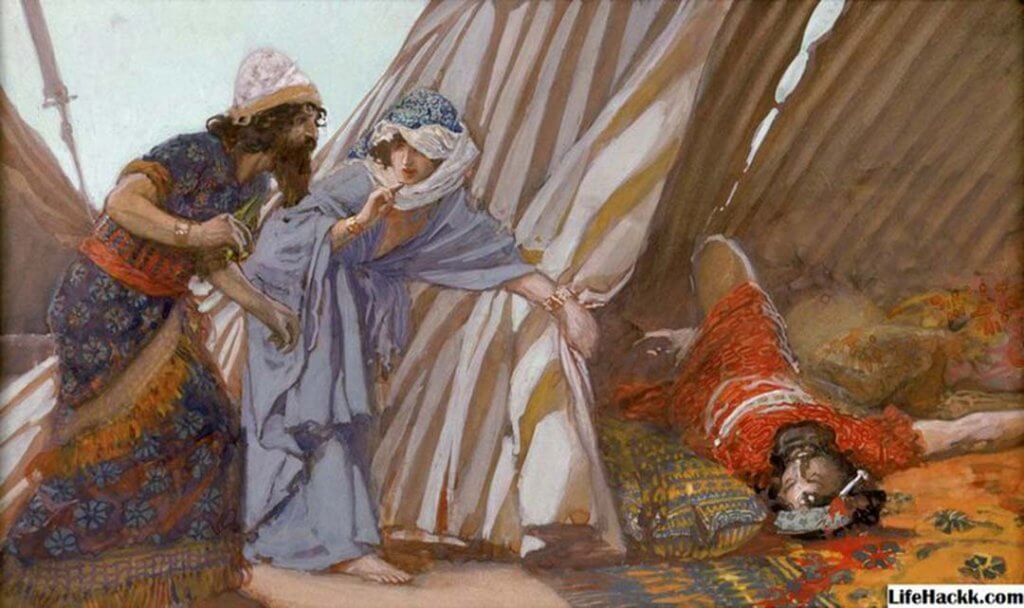
Jael Shows to Barak, Sisera Lying Dead, c. 1896-1902. ( credit: James Tissot, public domain, via Wikimedia Commons)
This example is “the first depiction of this episode and the first time we’ve seen a depiction of the biblical heroines Deborah and Jael in ancient Jewish art,” Jodi Magness said in a statement.
“Looking at the Book of Joshua, chapter 19, we can see how the story might have had special resonance for the Jewish community at Huqoq, as it is described as taking place in the same geographical region—the territory of the tribes of Naphtali and Zebulon,” added Magness.
Several other scenes from the book of Judges are represented in the Huqoq mosaics, including Samson and the foxes (Judges 15:4) and Samson carrying the gate of Gaza on his shoulders (Judges 16:3). Other biblical scenes portrayed are Noah’s Ark, the Tower of Babel, the Exodus, Jonah and the Fish, and the four beasts from the apocalyptic vision in Daniel 7.
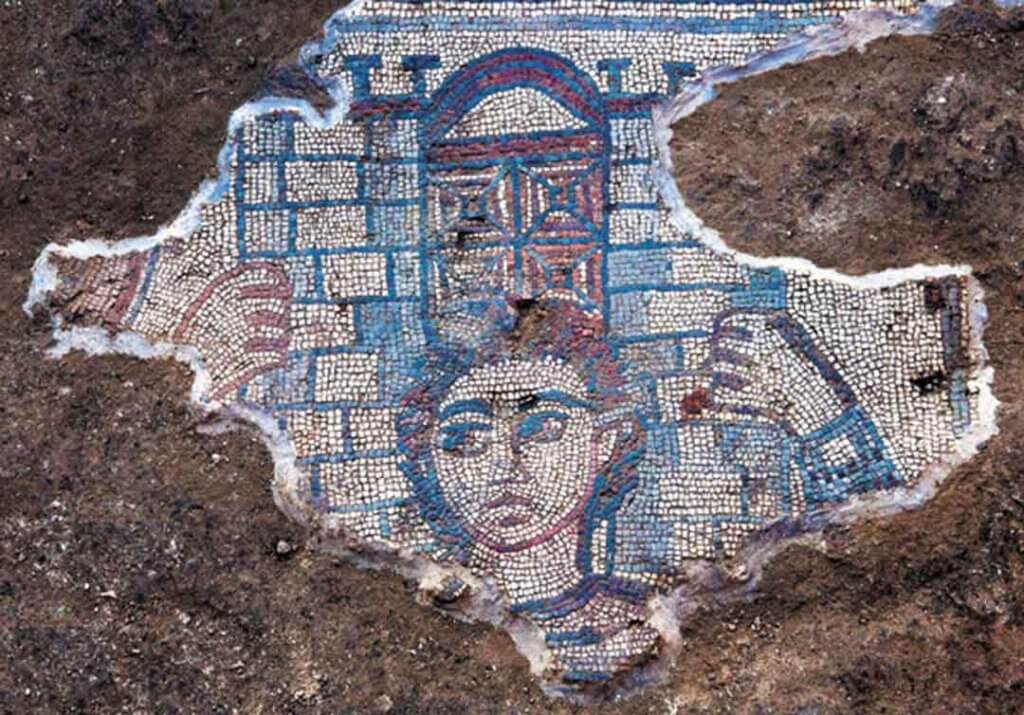
Mosaic of Samson in the Bible, carrying the gate of Gaza on his shoulders. This is the second Huqoq mosaic found that depicts Samson. (credit: Jim Haberman, UNC Chapel Hill)
First Non-Biblical Stories Portrayed in a Synagogue
In addition to the biblical mosaics, the team also uncovered a fragment of a dedication inscription in Hebrew, surrounded by a wreath and bordered by panels showing two vases that hold sprouting vines, measuring 6 feet tall and 2 feet wide. “The vines form medallions that frame four animals eating clusters of grapes: a hare, a fox, a leopard and a wild boar,” according to the university’s release.
The project has unearthed “the first non-biblical story ever found decorating an ancient synagogue.” That work is thought by the excavators to depict the legendary meeting between Alexander the Great and the Jewish high priest, Simon the Just, at the gates of Jerusalem. Other scenes portray the aftermath of a battle including elephants and an image of the Helios-zodiac cycle.
Lessons Learned from the Unique Art
The Huqoq mosaics offer unique views into the themes and motifs of early Jewish art. “The mosaics decorating the floor of the Huqoq synagogue revolutionize our understanding of Judaism in this period,” said Magness in a 2018 press release.
“Ancient Jewish art is often thought to be aniconic, or lacking images. But these mosaics, colorful and filled with figured scenes, attest to a rich visual culture as well as to the dynamism and diversity of Judaism in the Late Roman and Byzantine periods.”
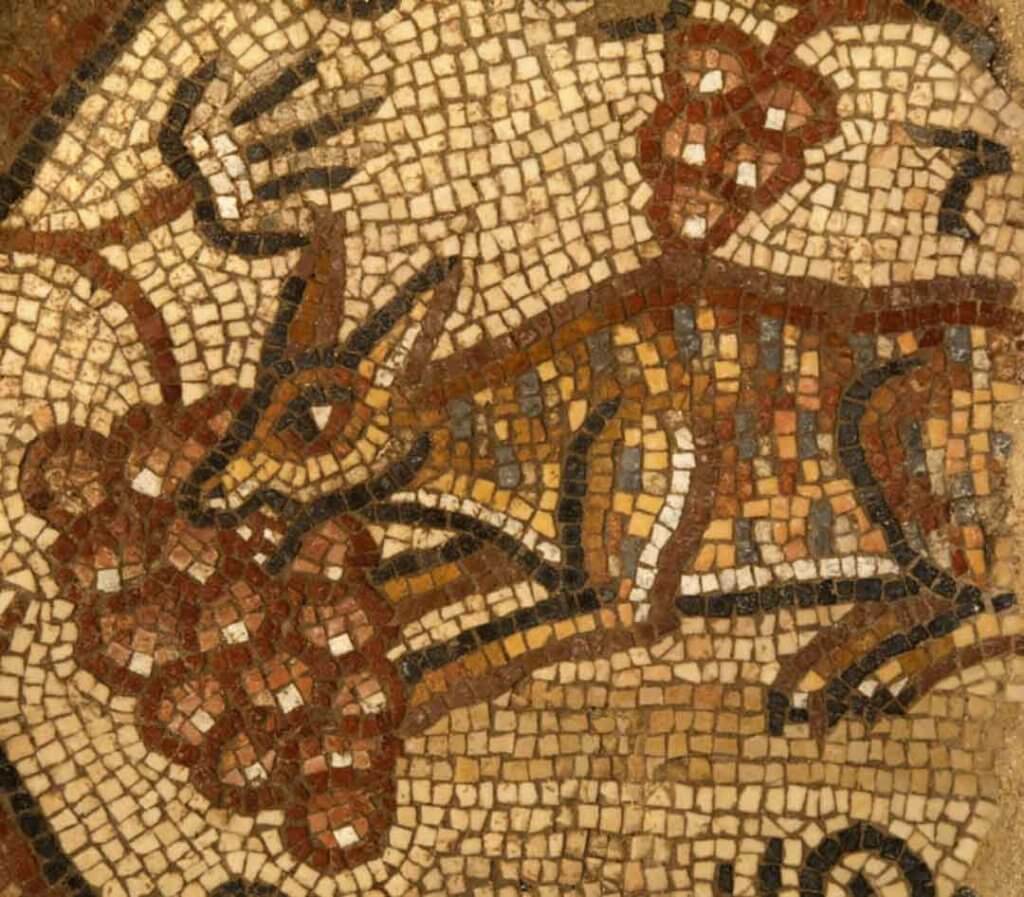
Mosaic depicting a fox eating grapes in the ancient synagogue at Huqoq. (credit: Jim Haberman, UNC Chapel Hill)
Nearly 75% of the original mosaic floor is still intact compared to similar mosaics in a nearby synagogue at Wadi Hamam which have been largely destroyed. Due to the unparalleled preservation and diverse content, they were named one of National Geographic’s “100 Archaeological Treasures of the Past” joining a list that includes famous sites such as Pompeii, Stonehenge and Easter Island.
Conclusion
The Huqoq Excavation Project is scheduled to keep digging through summer 2023. All mosaics salvaged this season “have been removed from the site for conservation, and the excavated areas have been backfilled.” We can’t wait to see what will be discovered next. Keep Thinking!
SOURCE: PATTERNS OF EVIDENCE

